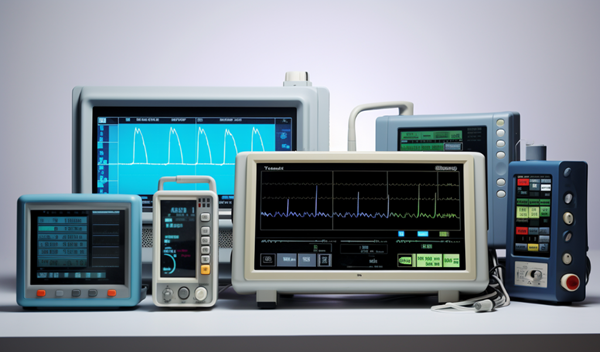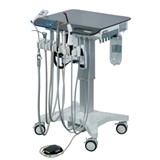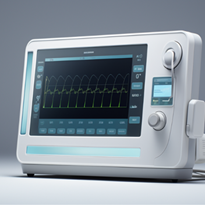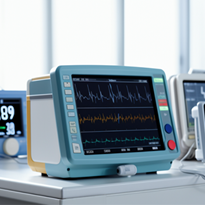I. Introduction
Patient Monitor Data Management plays a critical role in modern healthcare, as patient monitoring systems have become integral to providing quality medical care. These systems collect and process vital data from patients, aiding healthcare professionals in making informed decisions and delivering timely interventions. However, with the increasing reliance on technology and digital data, ensuring the security and privacy of patient information has become a paramount concern.
II. Secure Data Storage and Transmission in Patient Monitoring Systems
A. Best Practices for Data Storage
- Data Retention Policies: Implementing well-defined data retention policies helps healthcare institutions retain essential patient data for appropriate periods, while also ensuring timely and secure disposal of unnecessary data.
- Regular Backups: Conducting periodic backups of patient data is crucial in case of system failures, cyber-attacks, or data corruption. Backup copies should be securely stored and easily retrievable when needed.
- Redundancy and Failover Mechanisms: Employing redundant storage and failover mechanisms ensures continuous availability of patient data even during hardware or software failures.
B. Encryption Techniques for Data Protection
- Data Encryption: Utilizing strong encryption algorithms to encode patient data while it is stored in databases or transmitted over networks prevents unauthorized access and safeguards patient privacy.
- End-to-End Encryption: Implementing end-to-end encryption ensures that data remains encrypted throughout its journey, from the patient monitor to the central storage, adding an extra layer of security against interception.
- Encryption Key Management: Proper management of encryption keys, including secure key storage and periodic rotation, is vital to maintain the integrity of encrypted patient data.
C. Access Controls and Authentication Measures
- Role-Based Access: Implementing role-based access controls restricts data access to authorized personnel only, reducing the risk of unauthorized individuals viewing sensitive patient information.
- Two-Factor Authentication (2FA): Requiring two-factor authentication for accessing patient data adds an additional layer of security, making it harder for malicious actors to breach the system.
- Audit Trails: Creating detailed audit trails of data access and activities helps monitor and track any suspicious behavior, assisting in the identification of potential security breaches.
III. Encryption and Authentication Measures for Patient Monitor Networks
A. Network Security Protocols:
- Implementing robust network security protocols is crucial to safeguard patient monitor networks from potential threats and unauthorized access.
- Network security protocols involve a set of rules and procedures designed to protect the integrity, confidentiality, and availability of data transmitted over the network.
- Using industry-standard security protocols, such as Transport Layer Security (TLS) and Secure Sockets Layer (SSL), helps to encrypt data during transmission, ensuring that sensitive patient information remains protected from eavesdropping and interception.
- Regularly updating and patching network security protocols is essential to address newly discovered vulnerabilities and strengthen the overall security posture of the patient monitoring system.
B. Intrusion Detection and Prevention:
- Deploying intrusion detection and prevention systems (IDPS) plays a vital role in proactively identifying and mitigating potential security breaches in real-time.
- Intrusion detection systems monitor network traffic and log events, analyzing them for signs of suspicious or malicious activity.
- Intrusion prevention systems, on the other hand, actively intervene to block or mitigate detected threats, preventing unauthorized access and data breaches.
- Continuous monitoring and analysis of network traffic enable healthcare organizations to detect anomalies, malware, and unauthorized attempts to access patient data, enhancing the overall security and protecting patient privacy.
C. Firewalls and Network Segmentation:
- Firewalls act as a critical line of defense between the internal network and external sources, controlling and monitoring incoming and outgoing traffic based on predefined security rules.
- Implementing firewalls at various network entry points helps prevent unauthorized access and potential cyberattacks.
- Network segmentation involves dividing the patient monitoring system into separate, isolated segments or zones, each with its own security controls and access restrictions.
- By segmenting the network, healthcare facilities can limit the potential impact of a security breach, as an intruder would have restricted access to only a specific portion of the system, reducing the risk of unauthorized access to sensitive patient data.
IV. Ensuring HIPAA Compliance and Patient Privacy Protection
A. Understanding HIPAA Regulations:
- The Health Insurance Portability and Accountability Act (HIPAA) is a federal law that sets national standards for the protection of patients' sensitive health information.
- Understanding the key provisions of HIPAA is essential for healthcare providers and organizations to ensure compliance and maintain patient privacy.
- HIPAA mandates the adoption of administrative, physical, and technical safeguards to protect electronic protected health information (ePHI) from unauthorized disclosure or access.
B. Privacy Policies and Consent Management:
- Developing comprehensive privacy policies that align with HIPAA requirements is critical in protecting patient privacy and maintaining trust.
- Privacy policies should clearly outline how patient data is collected, used, stored, and shared within the patient monitoring system.
Effective consent management procedures must be in place to obtain patient authorization before using or disclosing their personal health information, except for permitted purposes under HIPAA.
C. Data Anonymization and De-identification:
- To further protect patient privacy, healthcare organizations can employ data anonymization and de-identification techniques.
- Data anonymization involves removing or encrypting any identifiable information from patient data, making it impossible to link the data back to specific individuals.
- De-identification techniques strip the data of specific identifiers, ensuring that the information is no longer personally identifiable and minimizing the risk of potential data breaches.
V.Data Integration and Analysis for Enhanced Patient Care
A. Benefits of Data Integration in Healthcare:
- Improved Patient Outcomes: By integrating data from various sources such as electronic health records, medical devices, and patient monitoring systems, healthcare providers gain a comprehensive view of a patient's health. This holistic approach enables them to make better-informed decisions and develop personalized treatment plans, ultimately leading to improved patient outcomes.
- Enhanced Care Coordination: Data integration allows different healthcare professionals involved in a patient's care, including doctors, nurses, specialists, and caregivers, to access and share critical information seamlessly. This streamlined communication enhances care coordination, reduces medical errors, and promotes a patient-centric approach to healthcare delivery.
- Early Disease Detection: With data integration, healthcare systems can identify patterns and trends that may indicate the early onset of certain diseases or deteriorating health conditions. By detecting these warning signs proactively, medical interventions can be initiated at an earlier stage, potentially preventing complications and reducing the overall cost of treatment.
B. Utilizing Big Data in Patient Monitoring:
- Comprehensive Data Collection: Big data analytics in patient monitoring enables the collection and storage of vast amounts of patient-related information, including vital signs, medical histories, and treatment outcomes. This comprehensive data collection provides valuable insights into patient health trends and population health patterns, aiding in evidence-based decision-making.
- Predictive Analytics: Big data analytics leverages advanced algorithms and statistical models to analyze large datasets. This facilitates predictive analytics, allowing healthcare providers to anticipate patient needs, identify high-risk individuals, and intervene proactively to prevent adverse events.
- Continuous Monitoring and Real-Time Alerts: Big data technologies enable real-time monitoring of patients, especially in critical care settings. Continuous data streams from monitoring devices trigger automated alerts when certain parameters deviate from the norm, enabling immediate attention from medical staff.
C. Leveraging AI and Machine Learning for Analysis:
- Efficient Data Processing: Artificial Intelligence (AI) and Machine Learning (ML) algorithms can quickly process and analyze vast amounts of patient data, significantly reducing the time taken for diagnosis and treatment planning. This efficiency leads to faster and more accurate decision-making, positively impacting patient outcomes.
- Personalized Treatment Plans: AI-driven analysis takes into account individual patient characteristics, medical history, and response to previous treatments. This personalized approach helps in tailoring treatment plans to the specific needs of each patient, ensuring higher treatment efficacy and patient satisfaction.
- Clinical Decision Support: AI-powered systems offer clinical decision support to healthcare providers, presenting them with evidence-based recommendations, treatment guidelines, and relevant research articles. This assists physicians in making well-informed choices, especially in complex medical cases.
VI. Staff Training on Data Security and Cyber Hygiene Practices
A. Importance of Staff Education and Training:
- Understanding Data Security Risks: Proper education helps healthcare staff comprehend the potential risks and threats to patient data security. By understanding these risks, they become more vigilant in protecting sensitive information and can take appropriate preventive measures.
- Compliance with Data Regulations: Training ensures that staff members are aware of the legal and regulatory requirements surrounding patient data protection, such as HIPAA (Health Insurance Portability and Accountability Act) in the United States. Compliance with these regulations is crucial to avoid penalties and maintain patient trust.
B. Creating Data Security Awareness Programs:
- Cybersecurity Best Practices: Awareness programs should cover essential cybersecurity best practices, including strong password management, recognizing phishing attempts, and using secure Wi-Fi networks. This empowers staff to actively participate in safeguarding patient information from external threats.
- Physical Security Measures: Apart from digital security, staff training should also emphasize the importance of physical security, such as locking computers when unattended and restricting access to sensitive areas.
C. Periodic Training and Updates:
- Staying Current with Evolving Threats: Cyber threats are constantly evolving, and new vulnerabilities are discovered regularly. Periodic training sessions and updates keep the staff informed about the latest security threats and preventive measures.
- Reinforcing a Culture of Security: Ongoing training reinforces a culture of data security within the healthcare organization, making it a collective responsibility of all staff members
VII. Addressing Risks of Data Breaches and Unauthorized Access
A. Identifying Potential Threats and Vulnerabilities
- Patient Data as a Valuable Target: Patient monitoring systems store sensitive and valuable health information, making them potential targets for cybercriminals seeking to exploit or sell such data for financial gain.
- Cyberattacks on Healthcare: The healthcare sector is increasingly becoming a target of cyberattacks due to the potential to disrupt critical services, extort ransom, or compromise patient data, necessitating heightened security measures.
B. Incident Response and Management
- Establishing Incident Response Plans: Healthcare institutions must develop comprehensive incident response plans that outline the necessary steps to be taken in the event of a data breach or security incident.
- Role of IT Security Team: A dedicated IT security team should be in place to promptly detect, assess, and respond to any security breaches to minimize the impact on patient data and the overall system.
C. Regular Security Audits and Assessments
- Conducting Periodic Audits: Regular security audits should be conducted to evaluate the effectiveness of existing security measures, identify potential weaknesses, and ensure compliance with industry standards and regulations.
- Third-Party Security Assessments: Engaging external security experts to conduct thorough assessments can provide an unbiased evaluation of the patient monitoring system's security posture.
To maintain compliance with regulations like HIPAA, healthcare institutions need to establish privacy policies, consent management procedures, and data anonymization techniques. Leveraging data integration and analysis, including big data and AI, can enhance patient care and treatment plans. Staff training on data security and cyber hygiene practices is crucial for creating a culture of data protection and minimizing risks. Additionally, addressing the risks of data breaches through incident response plans, regular security audits, and external assessments reinforces the commitment to patient data security and confidentiality. By adopting these measures, healthcare providers can ensure the privacy and integrity of patient information, providing a foundation for safe and effective patient care.









-160x160-state_article-rel-cat.png)






-160x160-state_article-rel-cat.png)







-160x160-state_article-rel-cat.png)




